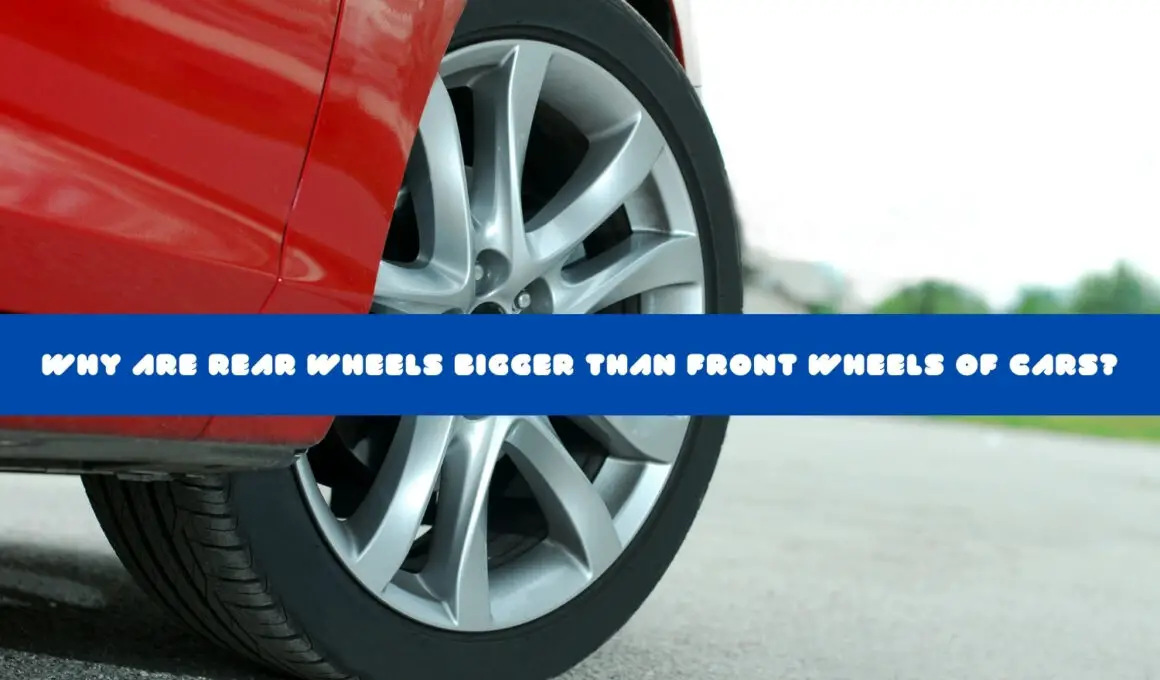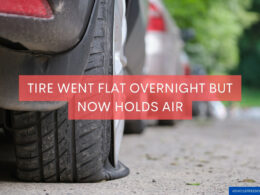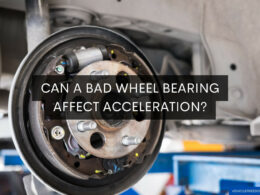In This Article Show
Have you ever wondered why the rear wheels are pretty much larger than the front wheels of your car? As an engineer and car enthusiast, lemme explain everything through this article.
Some cars, including most mid-engine cars, are made with larger rear wheels than front wheels. Because it increases acceleration potential, helps to make sharp turns, is suitable for balance, lifts the rear axle for aesthetic purposes, keeps less weight on the front wheels, & maintains mass inertia.
Although it is necessary to put small wheels on the front, it is also not advisable to be overly obsessed, as it has several disadvantages.
Why do cars have bigger rear wheels than front wheels?
We all know that most cars in the market have identical rear and front wheels.
However, a set of primarily sporty cars uses larger rear wheels than front wheels. But why is that? Let me explain with seven reasons…
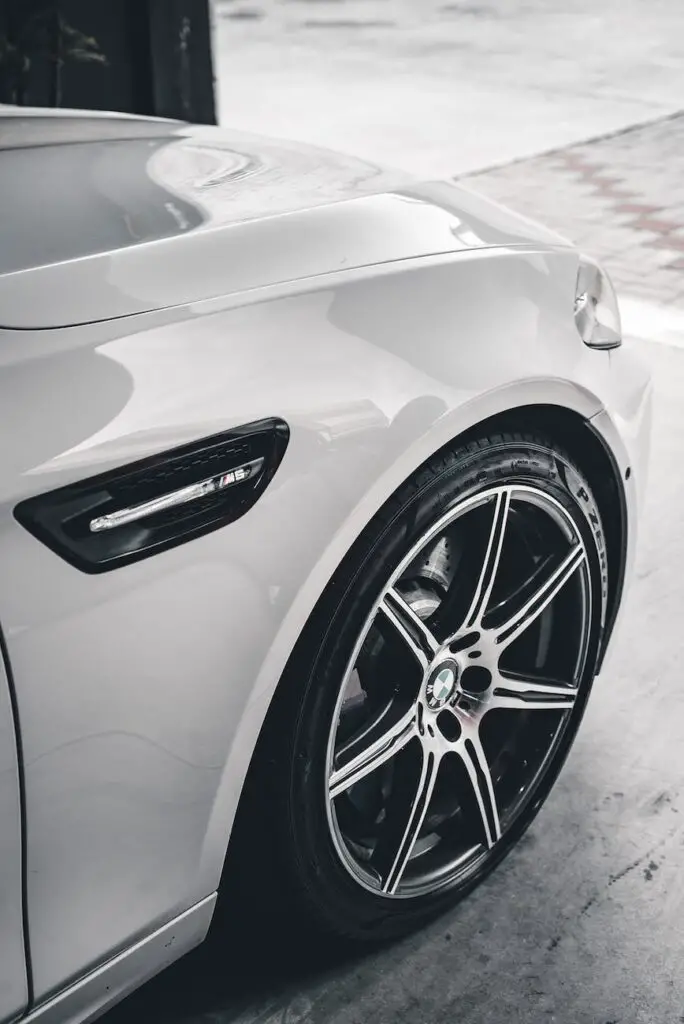
1. To increase acceleration potential
Since the potential acceleration increases as the rubber contacts the road along the axis of the car, having fairly larger diameter rear wheels is beneficial, especially in the motorsports industry.
Because every millisecond matters to them!
2. Help to take sharp turns
Having smaller wheels in the front helps the vehicle easily take sharp turns.
It’s evident that bigger wheels in the front make steering much more complex, and it can jam against the car body.
3. Mass inertia
As we all know, most of the vehicle’s weight typically moves to the rear part as you accelerate the car.
If you compare the rear and front wheels, the front wheels usually don’t require much contact patch as the rear wheels take care of many functions, especially braking and steering.
Further, the mass inertia is another reason why most rear wheels are larger than front wheels to provide better surface contact, producing a higher wheel tangential force on the ground for quicker acceleration.
But, this theory is applicable when the car is rear-wheel drive.
This is one of the reasons why most people think having smaller wheels in the front makes cars faster.
4. For the balance
Having large rear wheels helps keep the vehicle in balance. So, the rear wheels need grip/traction to put down the power produced by the wheel’s tangential force.
The front wheels require an excellent reaction and sensitivity to the steering wheel.
Thus, having wide, large wheels on the back is better for good traction and handling, while the front wheels are slightly narrower for ease of applying steering force.
5. To put the rear axle higher
Car manufacturers tend to put larger wheels in the rear to put the rear axle in a slightly higher position, which is excellent for rear mid-engine cars.
The engine is located between the rear-drive axles and the driver in mid-engine cars because it makes packaging much easier for the manufacturers.
6. For aesthetic purposes
I agree that performance and safety are the most significant factors in a car. However, who would want to buy a car without aesthetic appeal?
I have seen enough times when people have installed 16″ front wheels and 18″ rear wheels or 18″ front wheels and 20″ rear wheels solely for a sporty look.
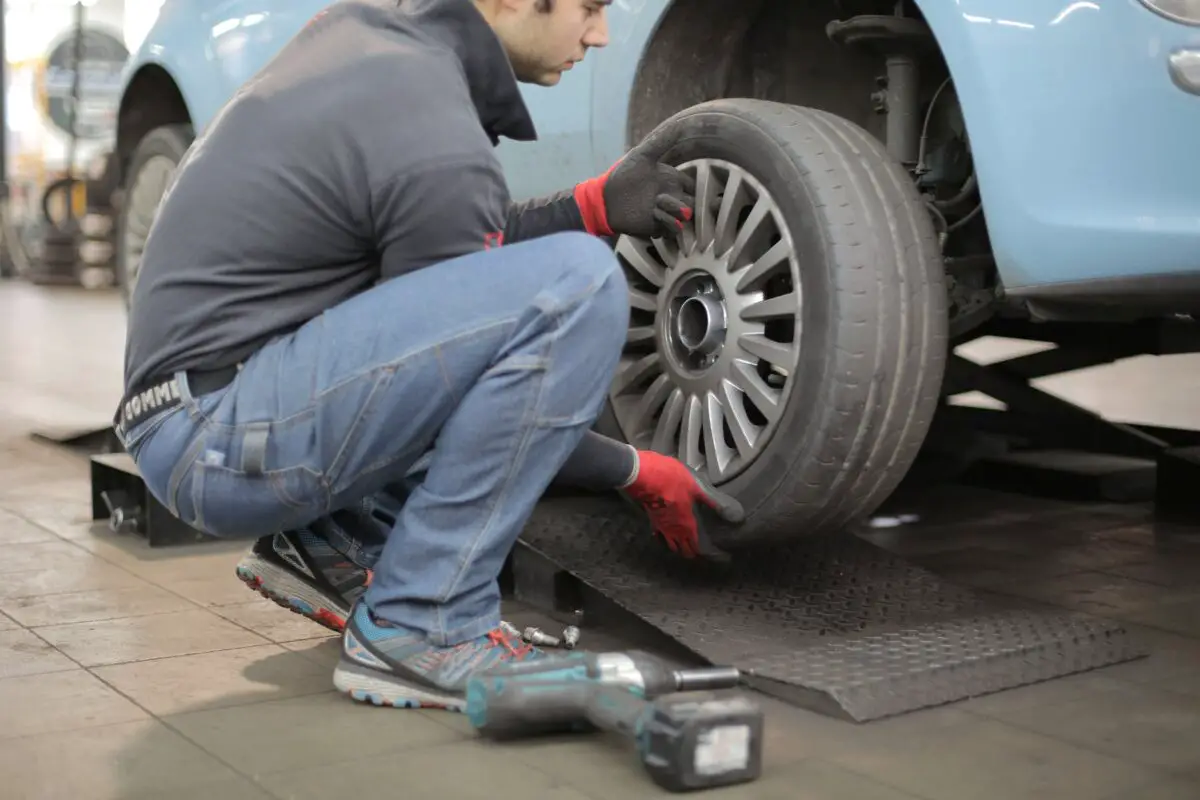
7. To keep less weight on the front wheels
Having identical wheels to the rear and front in a sports car is a major con in the motor racing industry.
Because it lowers the car performance, people put thin and smaller wheels that can split the air better, give better control over the steering wheel, and significantly reduce the wheel weight.
Further, having smaller wheels on the front gives the following minor advantages to a car.
- Easier to take sharp turns due to less sidewall roll.
- It improves stability at high speeds.
- You will have better control over wet surfaces.
- Slightly good for the mileage.
Do you have to put small wheels in front, then?
Although this depends on the car design and the manufacturer, you won’t find a good reason to do so from the above reasons other than aesthetic appeal.
Because many of the above reasons apply to sports cars.
Sure, it will save you several bucks every month. Still, I see this as completely unnecessary for regular cars, especially when your manufacturer hasn’t specified reducing front wheel size or increasing rear wheel size as a modification option.
If installing larger wheels to the rear or smaller wheels to the front hasn’t been specified as an option in the user manual, this may affect your car’s performance badly.
Here are some common problems you may face after fitting the inappropriate wheels on your car,
- You may have to re-calibrate the odometer and speedometer.
- Expensive.
- Proper wheel alignment angles issues.
- The wheels may wear out faster.
- Issues with the Advanced Driver Assistance Safety system may encounter.
So, it’s not entirely worth installing smaller wheels to the front if you’re a regular person like me.
However, sports cars are manufactured to come with this wheel setup, so you don’t want to worry if you’re thinking about buying a sports car.
Things to be aware of
Here are some of the things you need to know.
- Consider reading the user manual and educating yourself about your car. Then you can understand what modifications you can do and can’t.
- Just be aware that aesthetic appeal is not everything. Don’t do if changing wheel size increases the car’s appearance but alters the performance.
- If you want to put bigger rear wheels or small front wheels, take a minute and review all the upsides and downsides that I have mentioned earlier in this article. Then, you will realize that it’s not worth it.
- Moreover, having smaller wheels on the front lowers the vehicle body frame, resulting in scraping the car, or you may find it difficult to drive over speed bumps.
- If you’re unsure what to do, consider seeking advice from professionals.
Frequently Asked Questions
Why do vehicles’ back wheels tend to be bigger than their front wheels?
The weight distribution of automobiles is primarily to blame for this. The majority of automobiles have a front-engine design, which means that the engine is positioned up front. The effect is that the front of the car usually weighs more than the rear. This weight distribution is compensated out by larger rear wheels, which can enhance handling and stability.
Are there other possible explanations for why a vehicle’s rear wheels can be bigger than its front ones?
A few more elements, in addition to weight distribution, might affect wheel size. One is that vehicles, especially high-performance ones, need extra traction at the back. The grip of the tires on the road can be improved by using larger rear wheels, which can enhance cornering and acceleration. The design of the vehicle itself is another influence; certain models simply have better-looking larger rear wheels.
Are there any potential drawbacks to cars having bigger rear wheels?
While having larger rear wheels can help with weight distribution and traction, there are also some possible drawbacks. One is that owning and maintaining a car might become more expensive since larger wheels and tires may cost more to replace. Moreover, they could be heavier, affecting handling and fuel economy. Furthermore, if the wheels are too big for the vehicle’s suspension system, the suspension parts may prematurely wear out, which could be expensive to fix, speaking from experience.
Conclusion
Who wouldn’t love to drive an excellent car with bigger rear wheels? Most car lovers are curious to know why rear wheels are bigger than some cars’ front wheels.
So, We discussed this issue in detail through this article.






